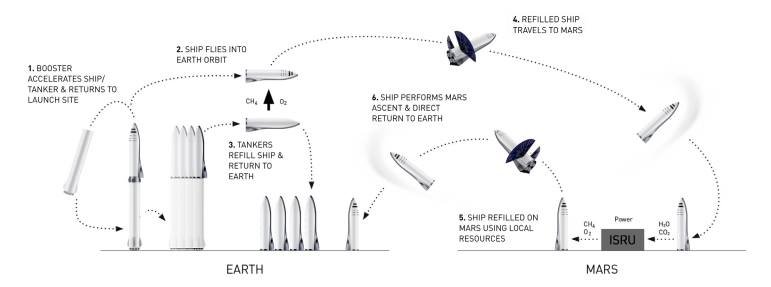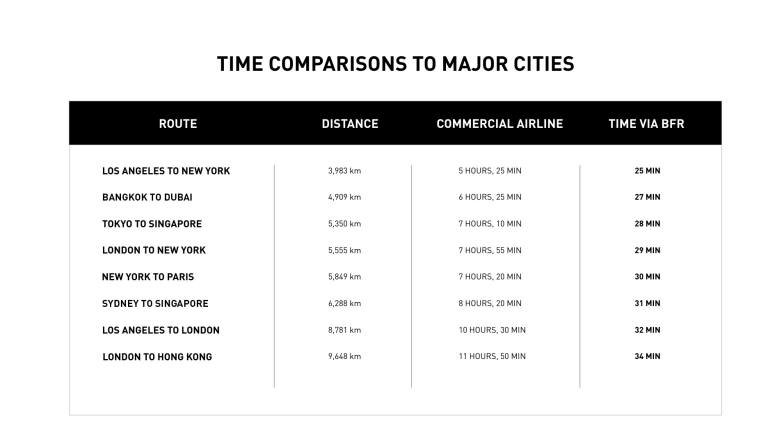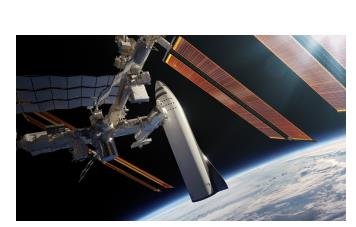
So i started an article that culminated into two parts. The first part you can read here in case you missed it.
I ended the last post by looking at parts of the BFR spacecraft, a ship Elon Musk intends to use as a shuttle to Mars. I would be continuing from there in this post and hopefully take a look at serious issues raised and questions that has been asked about man's dream to colonize Mars.
BFR REFILLING
How do you refill the BFR when its empty? Not like there are any refilling stations in space. According to Musk, this is actually very simple; And this is the point where i look at him with a side eye cos you and i know there would be nothing simple about this.
Anyways, for refilling, the two ships would be mating at the rear section. Yeh!!! its mating season in space, who doesn't want to see two engines mating. But on a serious note now;
You know the rear end of a rocket just before liftoff, the tanker ship would be connected to the BFR at that rear end, hence the use of the word mating. The mating interface and propellant filled lines would be reused the same way it was used when the ship is on the booster.
To transfer the propellant;(the propellant is that part of the BFR that carries the fuel) control thrusters would be used to accelerate in the direction you want to empty. so if you accelerate in this direction, the propellant goes the opposite direction making it easy to transfer the propellant from the tanker to the ship.

SpaceX: Propellant Settled by milli-g acceleration using control thrusters
Refilling would be done via a process called Orbital Refilling. If you fly the BFR to space, its possible you''ll just get about as far as the low earth orbit before your exhaust your fuel. Unless you want to see yourself floating in space till a meteor blast you guys to an unknown destination in the after life, you'll need to refill, how do you do this.
According to Elon Musk, if you send up tankers and refill in the orbit, you can refill the tanks all the way to the top, that way you can get up to 150 tons of fuel to get to Mars. And because the tankers itself have a high reuse capability then you are just paying for just the cost of the propellant. So what we need to concentrate on is setting up automated rendezvous, docking and refilling points.
MARS TRANSPORTATION ARCHITECTURE
Its a simple system or so i think and its something i have mentioned earlier in this post. The plan is to take the BFR into orbit, then refill it till the tanks are full, you grab a donut or whatever it is they sell up there as you wait. Once the tanks are full, you prepare for the final destination, MARS where you can either land on a rocky or dusty ground. According to Musk, wherever you land you are sure its not going to be in a pool of molten lava.
But one question remains and one that was asked by @darth-cryptic;
HOW DO YOU GET THE FUEL TO COME BACK TO EARTH?
We know the BFR is reusable, we know it would be a safe landing, we also know you might start to get home sick and really just want to come back to earth to steem or party, how do we get that fuel. Musk says it would be produced locally on Mars.
Mars atmosphere contains C02 and plenty of water ice which invariable gives you H20 (water). Chemistry heads know that with this you can make CH4 and O2 using the sabatier process. This is enough to get the fuel you need.
In addition to this, because Mars has lower gravity than earth, you would not need a booster to reach earth, this saves us a loot of time trying to build a take off booster point for the BFR. You can go all the way from the surface of Mars to the surface of Earth with just the ship.
Enough of the talk. The image below would do justice.

SpaceX: Mars Transportation Architecture
In 2022, Musk want to make the dream of traveling to Mars a reality by sending the first cargo missions. And then in 2024, 4 ships would travel to Mars, 2 cargo ship and 2 crew ships. The goal of the first ship is to find a good source of water while the goal of the second is to build the propellant plant and depot.
The propellant depot would contain a large arrangement of solar panels and everything necessary to mine and refine water while at the same time drawing CO2 from the atmosphere to create and store CH4 and O2.
OTHER USES OF THE BFR
Earth to Earth Transportation
Apart from going to Mars, the BFR can also be used to make earth to earth transportation easy. Below is table showing how fast it would be to go from one point to another using the BFR.

SpaceX: Earth To Earth Time Comparisons
If you could travel to Mars, why not use the same technology and travel round earth. The BFR would leave the earth atmosphere into space then coming back down into earth to reach its final destination.
As there are no friction in space, the ride would be very smooth. You are saved from the constant air turbulence and whats good, you get to your destination in no time.
Moon Missions
With the BFR, Lunar surface missions can be possible without the need to do produce propellants on the surface of the moon. With this, building a lunar base would be very easy.

Transporting Satellites
With the advent of the BFR, large satellites never before seen can be transported to the earths orbit. Or send a large number of small satellites, collect old stallites or clean up debris.

SpaceX: BFR docking with the International Space Station
With all these, its not doubt that colonizing other planets especially Mars is something we humans can achieve in this century. While it might be a dream now, i would love you to tell me of one great achievement and/or innovation that didn't start with a dream.
And on that note i would be leaving you with the words of Elon Musk himself.
You want to wake up in the morning and think the future is going to be great - and that's what being a spacefaring civilization is all about. It's about believing in the future and thinking that the future will be better than the past. And I can't think of anything more exciting than going out there and being among the stars.
REFERENCE
SpaceX: Making Life Multiplanetry Transcript

